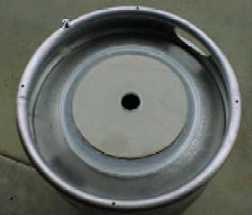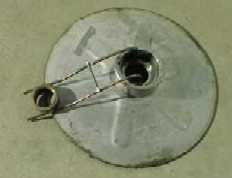
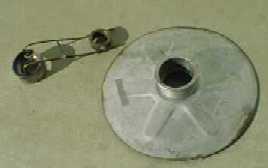
At first I had leak problems because the hole I cut into the keg was so close to the seal, it had to be centered exactly, or it leaked. Using the same seal, I cut a polycarbonate disk and placed it against the seal, added a gasket and it worked fine. Leaving a flat surface for the seal, and the keg convex top cant miss the gasket. The gasket width gave me a lot more flexibility with centering to the hole. You can see the line around the opening, the original seal locates inside the line.
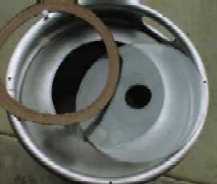
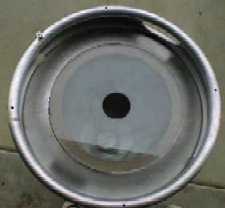
Next, I built another lid (untried as of yet) but cut a .5" wide, .075 deep grove around radius, which will center on the keg opening and filled it with RTV. It should be reusable several times, and it fits really nice. The first pix shows the 2-15 degree angles on the copper disk edge, that really helps keep the seal (black) in place. I use a brass pin in the bottom of the column to hold the packing in place, easy to remove so the polycarbonate disk can be slid on.
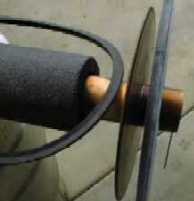
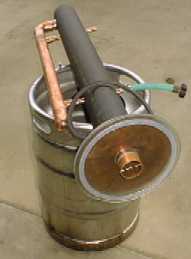
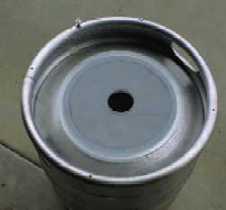
While I was making plastic circles and a big mess in the garage I cut this one to fit a stainless pot with a flat edge. I used a paper gasket, and lots of clamps to hold it down, that's how I got the mini model (see the photos page). This looks lots simpler without clamps.
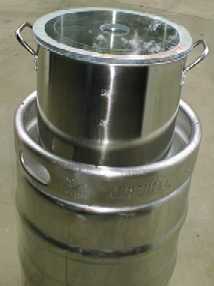
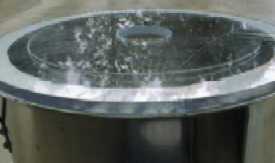
And, last but not least, (while I was continuing the mess in the garage) I made a smaller disk and put a hole in it to match a carboy. Now, the standard fermentation lock and cork will fit, and I can use the keg for a ferment container. Still working on a good wort recipe, after that I'll try this setup. The brown protective paper is still attached, that gets removed.
